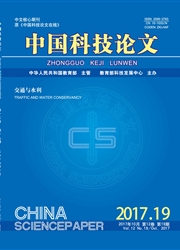

 中文摘要:
中文摘要:
为了探究农业废弃物生物质炭在重金属污染土壤固定化修复中的应用潜力,以2种西北典型的油料作物生物质——胡麻、油菜的秸秆和油渣为原料,热解制得生物炭(600℃下制得胡麻秸秆生物炭标记为FS600,油菜秸秆生物炭标记为RS600,400℃下制得胡麻油渣生物炭标记为FT400,油菜油渣生物炭标记为RT400),采用批量平衡法,研究了4种生物炭对Cu(Ⅱ)的吸附作用,考察了溶液pH值、吸附时间和Cu(Ⅱ)初始质量浓度对吸附作用的影响,分析了吸附动力学和热力学特征,并探究了吸附机制。结果表明:4种生物炭对Cu(Ⅱ)的吸附量随溶液pH升高而增大;生物炭对Cu(Ⅱ)的吸附量随时间延长逐渐增大,到4h前后吸附达到平衡;当Cu(Ⅱ)初始质量浓度由10mg·L-1增加到300mg·L-1时,生物炭对Cu(Ⅱ)的吸附量先增大,而后达到平衡。Cu(Ⅱ)在生物炭上的吸附动力学符合准二级动力学模型,等温吸附模型符合Langmuir等温方程,4种生物炭对Cu(Ⅱ)的最大吸附量可达每g 9.28(FS600)、8.11(RS600)、4.43(FT400)和5.70mg(RT400)。生物炭对Cu(Ⅱ)的主要吸附机制是表面配位反应和离子交换。本结果可为西北油料作物生物质炭在西北土壤重金属固定化修复的应用提供理论参考。
 英文摘要:
英文摘要:
In order to explore the potential of agricultural waste biochars in remediation of soils contaminated with heavy metals,various biochars were prepared from flax(Linum usitatissimum L.)straw at 600℃,rape(Brassica campestris L.)straw at 600℃,flax seed tailing at 400℃ and rape seed tailing at 400 oC,which were termed as FS600,RS600,FT400 and RT400,respectively.The batch equilibrium experiments were conducted to examine the adsorptive performance of Cu(Ⅱ)onto biochars and its mechanisms were investigated.The effects of pH values of solution,contact time and initial concentration of Cu(Ⅱ)on the adsorption of Cu(Ⅱ)onto biochars were tested.The results show that increasing pH value of solution is more conducive to the adsorption.The adsorption capacity of Cu(Ⅱ)gradually increases with increasing the contact time while the equilibrium adsorptive capacity of Cu(Ⅱ)is observed at 4h.In the range of 10-300mg·L^-1 of initial Cu(Ⅱ)concentration,the adsorption capacity increases firstly and then reaches to equilibrium.The adsorptive kinetics of Cu(Ⅱ)onto biochars follows the pseudo-second order model while the isotherm model fits the Langmuir one.The maximum adsorptive capacities of Cu(Ⅱ)onto per gram of biochars are 9.28(FS600),8.11(RS600),4.43(FT400)and 5.70 mg,respectively.The main mechanisms of adsorption are surface coordination and ion exchange.The results can provide a theoretical reference for immobilization remediation of heavy metals contaminated loess soils by biochars.
 同期刊论文项目
同期刊论文项目
 同项目期刊论文
同项目期刊论文
 期刊信息
期刊信息
